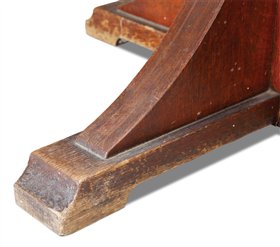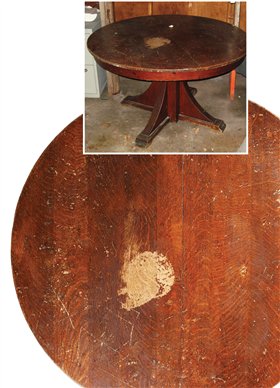We may receive a commission when you use our affiliate links. However, this does not impact our recommendations.
Restore an Antique Oak Table
Thoughtful finishing and
new leaves prepare this classic
for the next 100 years.
By Kevin Southwick
Purchase the complete version of this woodworking technique story from AWBookstore.com.
| This old table looks like a prime candidate for refinishing. Strip off the old finish, sand out all the dings and scratches, spray on a catalyzed lacquer finish and it would look brand new. But in my opinion, doing this would rob the table of its history. Lovers of antique furniture value an original finish in part because of the witness it bears. In its present condition this table does that – it tells a story 100 years old. But let’s face it. As it is, the table is an eyesore. That’s the conundrum of working with antique |
Click any image to view a larger version.
The The top’s original shellac finish is so heavily |
| This story originally appeared in American Woodworker January 2008, issue #133. | Purchase the complete version of this woodworking technique story from AWBookstore.com. |
Here are some supplies and tools we find essential in our everyday work around the shop. We may receive a commission from sales referred by our links; however, we have carefully selected these products for their usefulness and quality.













